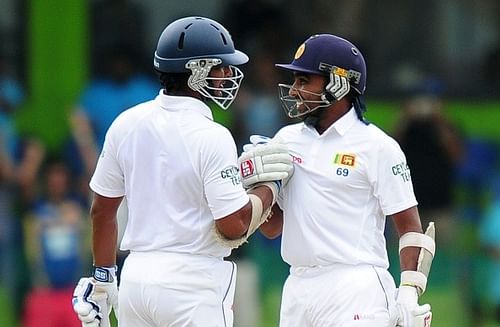
In the midst of a transition period, is Sri Lankan cricket dying a slow death?

Kumar Sangakkara’s poignant farewell speech overwhelmed a country and touched a hundred souls, but it did not fail to leave a couple of questions lingering at the end. The bit about Sri Lanka having an amazing future under Angelo Mathews left cynics wondering whether the southpaw was indeed serious. Sangakkara is a kind man. For all we know, Bishen Singh Bedi, had he been interested in Sri Lankan cricket, would’ve scoffed at Sanga’s statement.
Mathews knows that life after Mahela Jayawardene, who hung up his boots last year and Sangakkara, is going to be massively arduous and trying. Rebuilding will take months and probably years, considering the acute lack of experience if not quality in the dressing room. The transition phase will be long and yield frustrating results, but the question is, for how long?
The rawness of the team
Notwithstanding Sangakkara’s kind words, the Lankan captain doesn’t have a particularly flattering side at his disposal. Besides him and Rangana Herath, no other player in the dressing room can brag about being a veteran of more than 50 Tests. Further, the next most experienced cricketer, Dhammika Prasad hasn’t even featured in 25 matches.
At this point, one may assume that Sri Lanka is nurturing a crew of youngsters who would represent the core group in the next two World Cups. Surprisingly, though, the average age of the eleven that took the field against India in the third Test is 28. Even if Herath, 37, is left out, the average remains marginally more than 27. The inexperience - most of the players having played 21 Tests or less - therefore is appalling.
If not the lack of experience, the naivety that accompany it and inability to cope with different circumstances, keep Sri Lanka in a precarious situation. Having struggled to put up a resistance against India and Pakistan at home, an overseas series victory looks like a remarkably distant dream for Matthews’s boys as of now.
The selection dilemma
With Sangakkara’s exit, the batting order has been thrown open to anybody who fits the bill. Ironically, there looms a problem of plenty for the openers’ slots as does a problem of scarcity for the middle order. Faced with a problem of such uniqueness, the unseasoned skipper settles on a quick fix for the last Test against India. With five openers comprising the top seven, it seems like a poor excuse for a batting line-up; but then, the available resources hardly ever promised Mathews a neat playing eleven.
The quandary grows more complicated if Mathews decides to promote himself ahead of Lahiru Thirimanne like he did in the first innings here. Thirimanne has been groomed as Sangakkara’s successor at No. 3 for long and playing him at any position below No. 4 negates his potential and ability to emerge as an impact player.
Although earmarked for great things as an opener, Dimuth Karunaratne finds himself at No. 3 with another left-hander replacing Sangakkara in the side. Sri Lanka fans could’ve braced themselves for a healthy competition between Upul Tharanga and Karunaratne had there been more credible alternatives available for the middle-order.
Despite having shown glimpses of his aptitude with a 46 and 48 against Pakistan on a challenging Pallekele surface, Tharanga found himself on the bench soon with Sangakkara’s return to the team. On his 21st outing as a Test cricketer, the 30-year-old appeared jittery against Indian pacers. It took him 18 balls to get off the mark. By then, Ishant Sharma had already opened him up once and KL Rahul had dropped one in front of first slip. His agonizing stay ended five deliveries later when Rahul, seeking redemption, held on to a fine catch off Ishant.
At the other end, Kaushal Silva fared no better succumbing to a short ball in the sixth over. However, with a century and two fifties in the last two series, he looks to have sealed his spot at the top. What then happens to Dinesh Chandimal, another senior-ish cricketer in the dressing room with gallons of talent and equal volumes of grit?
Unlike Chandimal, the rest of the Sri Lankan batting order reeks of docility and helplessness in dire predicaments. Chandimal is different. Instead of panicking in the face of crisis, the mature right-hander knows how to absorb pressure and assume responsibility, courtesy his frequent partnerships with the tail-enders. Tampering with his batting position is unwise, for it can upset his rhythm thereby hurting the team into further perils. For once, Sri Lanka’s think tank would do well to preserve their best batsman for their own sake.
Meanwhile, the quest for that elusive all-rounder continues to yield only familiar names. After Jehan Mubarak fell short of justifying his selection with a string of half-decent performances, Kusal Perera was roped in as a replacement for this Test. With him donning the gloves, Chandimal was relieved of responsibility behind the wicket and promoted up the batting order ahead of Matthews. Sri Lanka was still bowled out for 201, more than half of that coming from Perera and Rangana Herath’s bats.